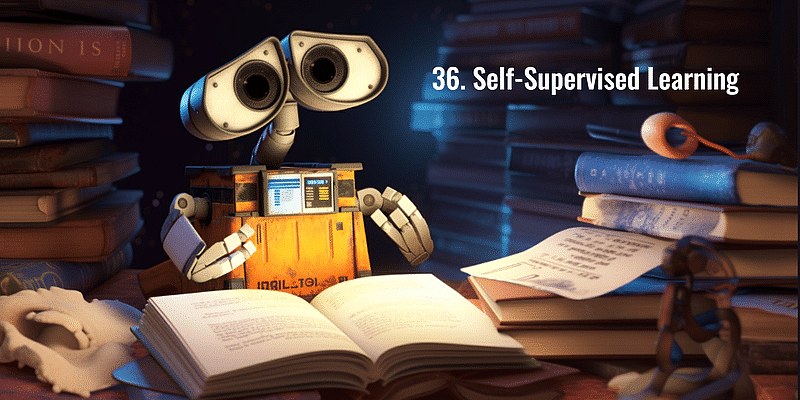In recent years, the field of artificial intelligence (AI) has witnessed a groundbreaking development known as self-supervised learning. This novel approach to machine learning has revolutionised the field by enabling AI models to learn from vast amounts of unlabelled data. Unlike traditional supervised learning, where labeled datasets are required, self-supervised learning allows machines to extract valuable knowledge and representations from unannotated data. This article explores the concept of self-supervised learning, its advantages, applications, and the potential impact it holds for the future of AI.
Understanding Self-Supervised Learning:
Self-supervised learning is a machine learning paradigm that allows AI models to learn from the inherent structure and patterns in unlabelled data. By utilising the vast amount of unannotated information available, these models can generate their own supervision signals to guide the learning process. This remarkable ability to learn without explicit human labelling has opened up new avenues for training AI systems.
Key Advantages of Self-Supervised Learning:
Leveraging Unlabelled Data: With the exponential growth of data on the internet, access to labeled datasets is often limited and expensive to obtain. Self-supervised learning overcomes this hurdle by harnessing the massive amounts of freely available unlabelled data. This enables AI models to learn more efficiently and effectively, as they can tap into a virtually limitless source of information.
Pretext Tasks: Self-supervised learning employs pretext tasks, which are designed to provide proxy objectives for the models to solve using unlabelled data. These pretext tasks are carefully crafted to capture meaningful and relevant information from the data, forcing the models to learn rich representations that can be further utilised in downstream tasks. By training models on pretext tasks, self-supervised learning effectively equips them with a comprehensive understanding of the data’s underlying structure.
Transfer Learning: Self-supervised learning facilitates transfer learning, where a model trained on one task can be fine-tuned for another related task. By learning high-level representations from unlabelled data, AI models gain a generalised understanding of the data domain, enabling them to transfer knowledge to different downstream tasks. This transferability significantly reduces the need for extensive labeled datasets, making it easier and more cost-effective to develop AI systems for various applications.
Applications of Self-Supervised Learning:
Computer Vision: Self-supervised learning has had a profound impact on computer vision tasks, such as image recognition, object detection, and segmentation. By training models on pretext tasks like image inpainting, colorisation, or predicting image transformations, they can learn powerful visual representations that improve performance in downstream tasks.
Natural Language Processing (NLP): Self-supervised learning has also demonstrated remarkable results in the field of NLP. By training language models on pretext tasks like language modelling or predicting masked words in a sentence, they acquire a deep understanding of language structure and semantics. These pre-trained models can then be fine-tuned for specific NLP tasks, such as sentiment analysis, machine translation, or question answering.
Reinforcement Learning: Self-supervised learning has found applications in reinforcement learning (RL) by enabling agents to learn in complex and unstructured environments. By training RL agents to predict future states or actions based on past experiences, they can acquire a rich understanding of the environment dynamics. This understanding leads to more efficient and effective decision-making, improving the performance of RL agents in challenging tasks.
The Future of Self-Supervised Learning:
As self-supervised learning continues to evolve, it holds immense potential for further advancements in AI. The ability to learn from unlabelled data will unlock new possibilities in domains where labeled data is scarce or costly to obtain. Moreover, the transferability of self-supervised models across different tasks and domains will streamline the development of AI systems, reducing the time and resources required for training. The integration of self-supervised learning with other cutting-edge techniques, such as reinforcement learning and generative models, will push the boundaries of AI even further.
Self-supervised learning has emerged as a game-changer in the field of artificial intelligence, enabling machines to learn from vast amounts of unlabelled data. By leveraging the inherent structure and patterns in unannotated information, AI models can acquire rich representations and knowledge, empowering them to tackle a wide range of tasks across various domains. With its ability to learn from unlabelled data and facilitate transfer learning, self-supervised learning holds the key to unlocking the true potential of AI and propelling the field into a new era of innovation and discovery.



![Read more about the article [YS Learn] Leadership lessons from Bill Campbell](https://blog.digitalsevaa.com/wp-content/uploads/2021/02/TrillionDollarCoach-01-1591626564735-300x150.png)






